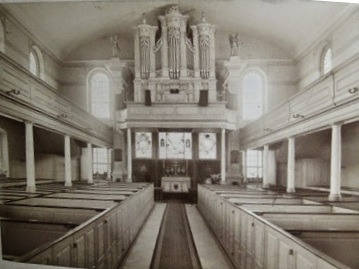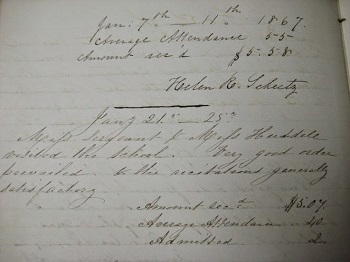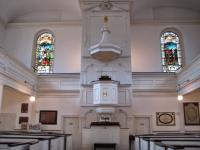St. Peter's Episcopal Church in Philadelphia, Pennsylvania was established in 1758 by members of Christ Church who had moved to the new neighborhood of Society Hill. This new church helped to ease the number of worshippers at Christ Church, which had begun feel the effects of overcrowding in the 1750s. It also allowed those in Society Hill to have a center of worship closer to their homes. St. Peter's remained linked to Christ Church (they were jointly run with the same rector, vestry, and wardens) under the moniker "The United Churches of Christ Church and St. Peter's" until 1832. At that point, St. Peter's separated from Christ Church, becoming its own independent entity, although Bishop William White (rector of the United Churches since 1779) remained the rector at both churches until his death 1836.
St. Peter's church building, which held its first service in 1761, is associated with well-known architects and sculptors. The church was designed by Robert Smith, considered by many to be one of the most important architects of the Colonial Period in America; the bell tower and steeple, added in 1842, were designed by renowned Philadelphia architect William Strickland; and Philadelphia neoclassical sculptor, William Rush, carved the statues Exhortation and Praise, from pine (and then painted white) for the church's interior in 1812.

The east end of St. Peter's Church at Eastertide, 1887. If you look closely, you can see William Rush's sculptures perched on the left and right sides of the organ case.




